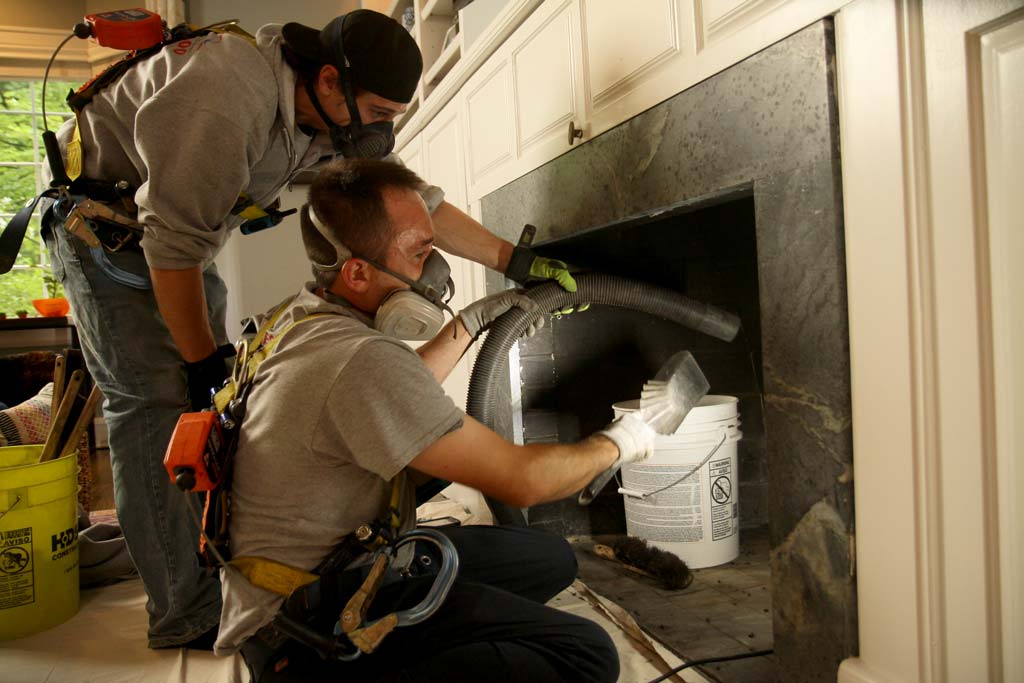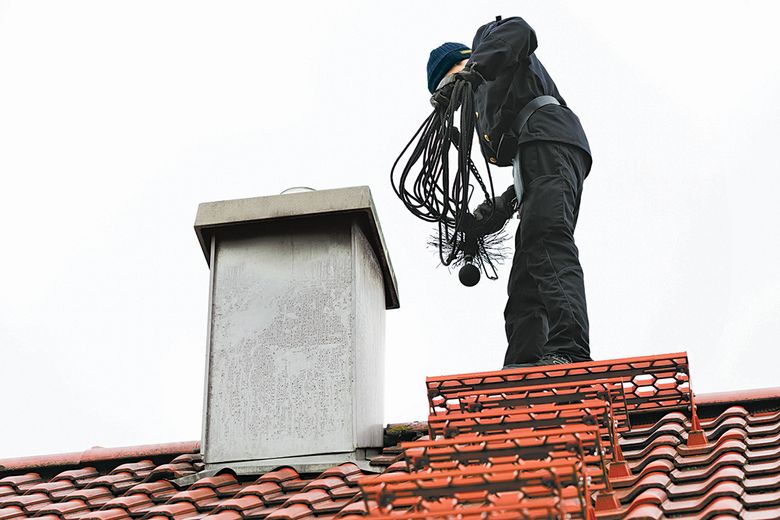Secure: Chimney Sweep San Jose Experts at Your Service
Secure: Chimney Sweep San Jose Experts at Your Service
Blog Article
The Hidden Dangers of Neglecting Chimney Sweeper and Maintenance
Neglecting smokeshaft move and upkeep can have serious effects that are usually ignored by homeowners. The hidden dangers can range from chimney fires and poisonous gas release to architectural damages and carbon monoxide poisoning. This is why it is essential to focus on regular smokeshaft upkeep and sweep solutions.
Chimney fires are an usual hazard triggered by the buildup of flammable creosote within the chimney. In addition, neglecting chimney upkeep can result in structural damage, including collapses and splits, endangering the security and security of the whole residence.
By understanding the concealed dangers and taking proactive steps to make sure smokeshaft move and maintenance, property owners can safeguard themselves and their households from these potential hazards.
Chimney Discharges
When routine move and upkeep are neglected,Smokeshaft fires posture a substantial threat to household properties. The accumulation of creosote, a highly combustible material, within the smokeshaft can fire up and result in a harmful fire. When timber or fossil fuels are shed, Creosote is a result of incomplete combustion and is formed. With time, this substance builds up on the internal wall surfaces of the chimney, increasing the risk of a fire outbreak.
When a smokeshaft fire occurs, the extreme warm can cause the flue ceramic tiles to split or collapse, allowing the fire to spread out to the surrounding areas of your house. The flames can breach the smokeshaft structure and extend into the wall surfaces or attic, bring about considerable residential or commercial property damage and possibly endangering the lives of the owners.
Additionally, the smoke and toxic gases generated during a smokeshaft fire can position a significant health and wellness threat. The breathing of these gases, such as carbon monoxide, can be fatal. Also if the fire is included within the smokeshaft, smoke can seep right into the living space, polluting the air and creating respiratory issues.
To stop smokeshaft fires, regular chimney moves and maintenance are necessary. Expert chimney sweeper can eliminate the built-up creosote and examine the chimney for any type of indicators of damage or clogs, guaranteeing that it remains in safe working problem. Neglecting these preventative actions can result in disastrous effects for property owners, making smokeshaft discharges a significant risk that must never be ignored.
Hazardous Gas Launch

The launch of these harmful gases throughout a smokeshaft fire can have serious consequences. The structural honesty of the home can be compromised as these gases can wear away steel elements, such as flue linings and chimney caps.
To avoid the launch of harmful gases during a smokeshaft fire, regular smokeshaft maintenance and move are important. This includes normal examinations, cleaning, and fixings if required. Additionally, mounting carbon monoxide detectors can give an early caution system for the presence of this harmful gas. By focusing on smokeshaft maintenance and sweep, home owners can mitigate the risk of poisonous gas release and make sure the safety of their residents and property.
Architectural Damage
One of the repercussions of ignoring chimney sweeper and upkeep is the possibility for significant structural damage. In time, the accumulation of creosote, debris, and other compounds in the smokeshaft can cause different problems that endanger the architectural honesty of the whole system.
One of the main concerns is the formation of smokeshaft fires. When creosote, an extremely flammable compound, accumulates inside the chimney, it can spark and result in a fire that can swiftly spread out to the remainder of the residence. The extreme warm produced by these fires can cause serious damage to the chimney's stonework, bring about splits, collapsing mortar, and also the collapse of the smokeshaft itself.
Furthermore, overlooking chimney upkeep can cause dampness seepage. Leaks or cracks in the smokeshaft can enable water to enter, resulting in water damage and deterioration of the smokeshaft's framework. In time, this can damage the blocks, mortar, and other products, triggering them to break down and possibly collapse.
In addition, the existence of animals and parasites in disregarded smokeshafts can likewise contribute to architectural damage. Chimney Sweep San Jose. Pets such as squirrels and birds can construct nests and leave behind particles that blocks the smokeshaft and protects against appropriate ventilation. This clog can result in a buildup of hazardous gases, reduced efficiency, and also structural collapse
Carbon Monoxide Gas Poisoning
Carbon monoxide poisoning is a prospective danger that can arise from disregarding chimney sweeper and this post upkeep. Carbon monoxide (CO) is an anemic, odor free gas that is generated when fuels such as gas, coal, wood, and oil are burned. When a chimney is not effectively preserved or brushed up consistently, it can become obstructed or blocked, preventing the correct air flow of CO. This can result in a hazardous build-up of CO in the home, which can have serious health effects.
Exposure to high levels of carbon monoxide can be lethal. Signs of carbon monoxide poisoning include headaches, wooziness, trouble, confusion, and nausea breathing. In severe cases, it can lead to loss of consciousness, organ damage, and even death. Babies, the senior, and individuals with pre-existing breathing problems are specifically prone to the impacts of carbon monoxide gas poisoning.
Routine chimney move and maintenance are necessary to stop carbon monoxide gas poisoning. An expert chimney move can eliminate any obstructions or clogs, making certain that CO can securely exit the home. Furthermore, routine examinations can determine any prospective issues or damages to the smokeshaft that might add to carbon monoxide accumulation.
To shield on your own and your household from the dangers of carbon monoxide gas poisoning, it is important to focus on chimney move and upkeep. By doing so, you can preserve a secure and healthy living environment.
Creosote Accumulation
A considerable problem associated with overlooking smokeshaft sweep and maintenance is the buildup of creosote. It is very flammable and can position severe risks to both the smokeshaft and the home if not appropriately attended to.
Creosote accumulation happens when the by-products of combustion, such as smoke, gases, and particles, cool and condense on the internal wall surfaces of the chimney (Chimney Sweep San Jose). With time, this sticky residue can build up and solidify, developing a thick layer that restricts airflow and increases the risk of smokeshaft fires
Among the primary risks of creosote accumulation is the capacity for a smokeshaft fire. Creosote is extremely combustible and can stir up at heats. Once sparked, it can melt at an extreme warm, potentially triggering significant damage to the chimney structure and spreading out to various other parts of the home.
In enhancement to the threat of fire, creosote build-up can additionally result in inadequate smokeshaft efficiency. As the layer of creosote enlarges, it can block the flue, reducing the he has a good point air flow and avoiding appropriate air flow. This can trigger smoke to back up into the home, causing respiratory issues and carbon monoxide poisoning.

Conclusion
To conclude, disregarding chimney move and upkeep can lead to significant repercussions. Chimney fires can cause substantial damages to the structure and put lives in jeopardy. Hazardous gas launch and carbon monoxide gas poisoning can lead to serious health and wellness dangers. In addition, the accumulation of creosote can additionally boost the danger of smokeshaft fires. For that reason, routine chimney upkeep is crucial to make certain the safety and security and wellness of individuals and their property.
Chimney fires are a common threat caused by the accumulation of combustible creosote within the chimney.To protect against smokeshaft fires, regular smokeshaft sweeps and upkeep are necessary. Professional chimney sweeps can eliminate the built-up creosote and inspect the smokeshaft for any indicators of damage or clogs, ensuring that it is in risk-free working problem.To prevent the launch of harmful gases during a chimney fire, normal chimney upkeep and sweep are critical. The extreme heat produced by these fires can cause serious damages you can find out more to the chimney's stonework, leading to fractures, collapsing mortar, and even the collapse of the smokeshaft itself.
Report this page